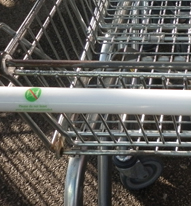UK retailers lost more than £3.1bn worth of inventory in 2014, equating to 0.89 percent of total retail sales. That’s a decline of 0.08 percentage points on the year before, according to the annual Global Retail Theft Barometer, underwritten by a grant from the loss prevention product company Checkpoint Systems, Inc.
When analysing shrinkage – comprised of shoplifting, employee theft, supplier and administrative errors – as a percentage of sales, the UK did better than most nations, ranking fifth best, behind only Norway, Switzerland, France and Poland. However, value-wise, due to the size of UK retail, stores lost the sixth most globally, behind the USA, Japan, Russia, Germany and China.
The latest report highlights that, in 2014, shoplifting accounted for 26 percent of all inventory loss, while retailers saw £770m stolen by employees and a further £300m lost as a result of supplier errors. Globally, UK stores had the worst level of administrative and non-crime losses, with 40 percent of all shrinkage coming as a result of internal errors, such as pricing mistakes – Brazil was the next highest with 29 percent, followed by Spain at 25 percent.
Russell Holland, Global Accounts Director at Checkpoint Systems, said: “At a time when some profit margins are being squeezed and sales are declining, the level of administrative and non-crime loss in the UK is a concern. The USA reported significantly fewer errors in this area, with it accounting for only 13 percent of shrinkage, while China and Germany saw levels of 11 percent and 19 percent respectively. It shows that solutions exist to tackle the problem and we should perhaps be learning from what other leading retail nations are doing to reduce the level of losses.”
According to the figures, dishonest employees accounted for a larger share of total shrinkage than the year before – an increase of nine percentage points. Shoplifting and internal errors also accounted for a higher percentage of the total loss in 2014, while the biggest reduction was seen among suppliers, where there was a decline of 12 percentage points on the year before.
From sector-to-sector the source of shrinkage varied, highlighting the importance of understanding where losses are incurred. In grocery stores, administrative and non-crime errors accounted for the largest share of losses, while beauty specialists saw dishonest staff as their biggest issue, accounting for 40 percent of shrink. For home improvement and gardening stores, shoplifting was the key cause of shrinkage, with customers responsible for 70 percent of their losses.
Shoplifting remains a major issue for UK retailers, the barometer suggests. Despite seeing a decline in shrink as a percentage of sales, thieves continue to target stores. More than £800m was stolen in 2014, with police data showing more than 329,000 incidents of shoplifting nationwide in the same year – a three percent increase on 2013 and around 27,000 more than in 2012. Of the 44 police forces analysed, 14 recorded a decline in shoplifting last year.
Shoplifters and dishonest employees primarily targeted small and easy-to-conceal items, as well as high-value items with high resale value. When sorted by retail vertical, the most stolen items included fashion accessories, power tools, mobile device accessories, wine and spirits, and razor blades. Ahead of Christmas, Checkpoint Systems said that one major UK retailer is security tagging prosciutto ham, in an effort to reduce shrinkage of one of its most popular festive food lines.
Russell Holland of Checkpoint said: “Our retail customers are telling us that the latest issue they face is from organised retail crime, where criminals are targeting stores using sophisticated methods. What’s clear is that as the population of the country continues to grow and the flow of people around Europe continues to gather pace, stores will continue to be targeted by thieves. Shoplifters, whether its gangs or individuals, will always try and beat the system. At present, we’re seeing an increase in the number who try to avoid security antenna detecting tagged items. Fortunately, there are solutions that help retailers stay one step ahead of the criminals.”
The latest edition of the Global Retail Theft Barometer reveals that the UK retail industry continued to spend around £2 billion on loss prevention – the equivalent of 0.58 percent of sales in 2014. Of the retailers surveyed, CCTV, security guards, and alarm monitoring are used by a majority of stores, with three in four respondents reporting use of each.
Among product-specific loss prevention solutions, 63 percent of retailers used EAS (Electronic Article Surveillance – labels and hard tags/EAS antennas) solutions. Spider wraps and security keepers (38 percent), and shelving solutions to control product access (38 percent) were used by retailers in the UK.
Russell Holland added: “Overall, we’ve seen shrinkage as a percentage of sales decrease in 2014. That’s positive news for retailers, who have maintained their loss prevention spend, during a difficult financial period, to keep losses under control. That said, the problem is that inventory loss not only represents an erosion of the bottom line, it means someone else can’t buy a product. Solutions that help keep merchandise available are invaluable and are proven to improve sales. Ultimately, with the rise of omnichannel retailing placing the high street under strain, protecting profits is the only way to ensure long term success.
“What’s vital is that stores use the wealth of data available to identify where their losses are coming from. Understanding who is ultimately responsible and what products are being affected, will help retailers implement measures to tackle the problem and make significant savings when it comes to inventory loss.”









